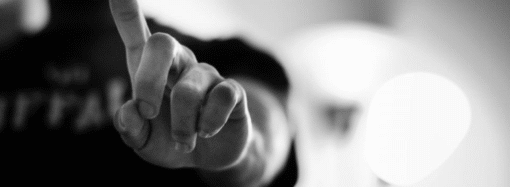Perhaps unaware of centuries of evidence that suggests some kind of connection between excessive alcohol consumption and aggressive behavior on the part of revelers, including its own, the U.S. government launched a series of studies to learn more in 2014. Since then, the cumulative tab for the ongoing studies into the behavior of alcohol-consuming nightclub customers has cost U.S. taxpayers nearly $3 million.
Thomas Phippen of the Daily Caller dredged up the details of this not-quite-so-cutting edge research:
The government has spent nearly $3 million studying people who drink and become aggressive at nightclubs since 2014, and found, among other things, that heavy drinking is linked to aggressive behavior.
The National Institutes of Health (NIH) has provided $2,897,322 to the Pacific Institute for Research & Evaluation for a series of studies on “group-based intervention for alcohol, drugs and aggression among club patrons.”
The project “targets young, working adults who frequent clubs that feature Electronic Music Dance Events (EMDE) and engage in high risk behaviors” — like heavy drinking and drug use, according to the grant description, first reported by the Washington Free Beacon.
The Washington Free Beacon‘s Elizabeth Harrington relates why the researchers chose to focus on Electronic Dance Music clubs:
The researchers also argued in the paper that EDM clubs “compel attention,” because dance clubs provide the “context in which social groups interact, a public space allowing for drinking and aggression to emerge.”
Then again, that pretty much describes any bar, tavern, club, or sporting event where alcohol is sold to the public. Harrington also shares some of the not-so-surprising results of the studies to date.
“Interestingly, groups that had higher levels of planned intoxication decreased risks of experiencing aggression, while a discrepancy in these intentions among group members increased the risks,” according to the study’s published results from 2016.
“Also, being in a group that is identified as having at least one member who is frequently drunk, increases the risk for experiencing sexual aggression,” the researchers said….
Other results include patrons at clubs with a security presence feel safer, and couples who club together experience “less risk.”
But the real kicker is the disclosure that the same research outfit receiving all these grants has also been awarded another $333,210 in U.S. taxpayer funds by the NIH to investigate bars on both sides of the U.S. and Mexican border in California:
The National Institutes of Health is spending over $300,000 to study bars along the U.S.-Mexico border.
The Pacific Institute for Research and Evaluation is heading the project. Among the study’s aims are to examine whether bars in border towns like Mexicali have “more dancing” and “louder music.”
The study, “Mexican American Drinking Contexts On and Away From the U.S.-Mexico Border,” involves researchers going into bars for “unobtrusive systematic observations.”
I wonder how many Beacon readers/researchers would be up for conducting similar unobtrusive systematic observations if only we could score some federal funding!
—
This article was republished with permission from Independent Institute.
Dear Readers,
Big Tech is suppressing our reach, refusing to let us advertise and squelching our ability to serve up a steady diet of truth and ideas. Help us fight back by becoming a member for just $5 a month and then join the discussion on Parler @CharlemagneInstitute and Gab @CharlemagneInstitute!
Image Credit:
Creative Commons
















Leave a Comment
Your email address will not be published. Required fields are marked with *